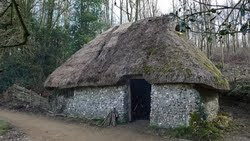
Our closing is scheduled for next week. We, according to the lawyer in Galicia, have to be present to pay the sellers, and pay the notary fees. There will be subsequent taxes but those will be calculated sometime after sale.
We´ve been told the notary fees will be a few hundred euros, so we´ll pay those in cash. But the sales price involves a few more zeros. Our plan was to move some money around from various accounts we have and then get a bank check to take to the closing, which seemed to make more practical sense than arriving with a briefcase full of euros.
This involved an interbank transfer from an account of mine (4 business days to process but no fee). A transfer from a joint account (via internet and within Caja Madrid so practically instantaneous). And then a visit to the local CM office for the check.
In Spain, you are ¨registered¨ to your local office. This means ¨our¨ office is the one closes to V´s parent´s flat, which is where we were when we opened the account. Therefore, transactions such as this have to be done through them, even though they´re across town and the same Bank. After several phone calls V determined that a ¨
Cheque Conformado¨ was just the ticket. That would be a check, signed and sealed by the CM Bank Director and made out to the two sellers, whom we know have a common account where we transferred the deposit. V negotiated a commission which was 30% of the initial amount proposed for allowing us to use our own money.
Off I went to the local branch. Turns out we can´t have a
cheque conformado because we don´t have a checkbook and it requires the use of one of our personal checks with a bunch of signatures and official stamps. She said a
cheque bancario or cashier´s check would do just fine, not to worry, it was the same thing. But the Director wasn´t in. So the lovely Raquel took a photocopy of our bank book, the names of the two sellers and the amount required and said she´d take care of it, get it signed by the Director when he returned, and call me around 1:00 PM.
At 1:45, after no phone call and knowing the branch would close at 2:00, I went over. Raquel asked me if I was sure the
cheque bancario was what I wanted. Thinking to myself ¨you yourself told me earlier it was¨ I said yes. After consulting the computer, the commission required by the other branch turned out to be the original non-negotiated amount. Phone calls ensued. Turns out the ¨negotiated¨ commission has an expiration date and would have to be re-applied for. Come back tomorrow and all will be well. V calls ¨our¨ branch and is assured that the commission will be the agreed upon amount and has been arranged again.
I arrive back today, and the lovely Raquel is nowhere to be seen. After waiting half an hour for the other ¨Personal Banker¨ to finish with a customer, he looks grim and says he was about to leave as I approach his desk. As I hover ever more resultely between him and the door and he casts an eye around at the considerable and lengthening lines of impatient Spanish, he thinks better of it and invites me to sit. Commission is correct. He then informs me that
cheques bancarios can absolutely, positively only be made out to ONE recipient or entity and not two. News to me. We decide to name the seller we´ve actually met on the check and hope they´ll work out how they´re going to divide the money. What we´ll do if that´s not acceptable, I don´t know.
I think we should all go back to the traditional business transaction and exchange sacks of cash. If it was good enough for Mario Conde, it´s good enough for me.
I miss banking I think understand.






















